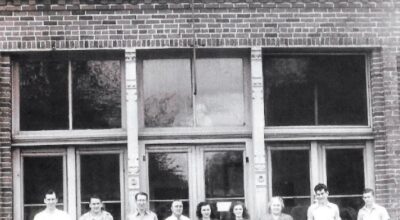Supervisors approve State Aid project
Published 5:18 pm Tuesday, March 20, 2018
The Lafayette County Board of Supervisors approved the use of state aid funds to improve five county roads during Monday morning’s meeting.
The roads in question are set to be microsurfaced beginning in mid-to-late summer. Microsurfacing, or microsealing, consists of the application of a mixture of water, asphalt emulsion, aggregate (very small crushed rock) and chemical additives to an existing asphalt concrete pavement surface.
County Engineer Larry Britt said microsurfacing is an easier way to seal the water from some roads that need a little maintenance, without doing a full hot asphalt overlay.
“These are roads that the Board of Supervisors requested I check to see if they were candidates for a microseal project,” Britt said. “Microsealing is an alternative method that is less expensive to overlay to prolong the service life of some roads.”
The major difference between traditional slurry seal and microsurfacing is in how they “break” or harden. Slurry relies on evaporation of the water in the asphalt emulsion. The asphalt emulsion used in microsurfacing contains chemical additives which allow it to break without relying on the sun or heat for evaporation to occur. Thus, microsurfacing is an application that hardens quicker than slurry seals and can be used when conditions would not allow slurry seal to be successfully placed. Streets that have a lot of shade and streets that have a lot of traffic are good candidates for microsurfacing.
The roads included in this project are parts of County Road 251, pumping station CR 103, CR 102, Old Highway 7 (CR 101) and Pumpkin Road (CR 415). These roads are located in districts 1, 2 or 3.
“As county engineer, we are constantly looking at all the roads that are on the State Aid Road System,” Britt said. “We check to see if any maintenance is required that county forces can accomplish. If it is something beyond their scope to do we look to see if we can set up a State Aid Project to perform the work.”
Britt also said microsurfacing is cheaper than asphalt, costing about $75,000 per mile instead of about $275,000 per mile. The project will include signage, leveling and striping of the roads.
The project will be paid for with State Aid funds, not local funds. State Aid is a statewide government program that assists Mississippi’s 82 counties in the construction and maintenance of secondary, non-state owned roads and bridges.
State Aid also administers the Local System Bridge Replacement and Rehabilitation Program for the repair or replacement of the neediest bridges in Mississippi, as well as administering special projects funded through the Federal Highway Administration and the Mississippi Development Authority.
Northeast District Engineer Jerry Gilliland said because the roads were constructed with State Aid funds, the maintenance is also done under State Aid.
“Microsurfacing is a good process,” Gilliland said. “We used it in Marshall County and Tallahatchie County and it’s held up very well.”
While the work is being done, Britt and Gilliland said other eligible county roads will be inspected to determine if they are in need of microsurfacing as well.
District 2 supervisor and board president Jeff Busby said the process of microsurfacing is one that will save Lafayette County roads and improve the lives of people who drive on them.
“It’s something we’ve seen work in other counties and seems like a good option,” Busby said. “I like new ideas, and I like to be able to save taxpayers some money. As elected officials, our job is to be stewards of the money, and we’re trying to do a good job of that.”





